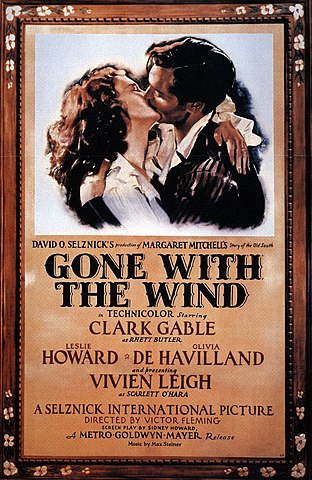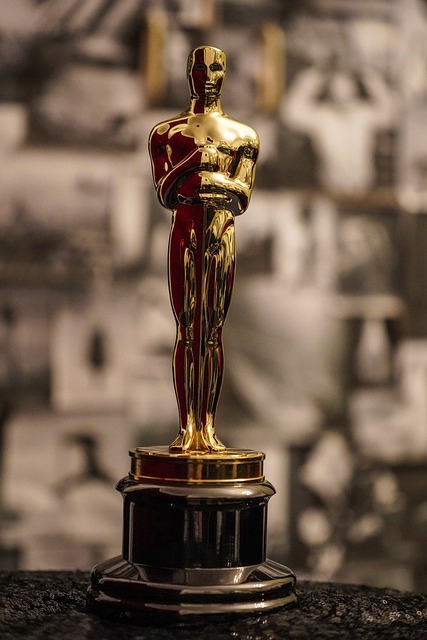The Oscars. Yes, the time of the year has come. For some, besides Christmas, the most wonderful time of the year. And for other folks, a bunch of insignificant, rich people who are receiving the worthless award.
So, what the fuss is all about? Why does every year almost two months before the big event we’re talking about films, evening gowns, glamour, various film awards and… Oscar?
To understand that, we have to go back to history. It will explain the fuss and give us proper context so we can see what is at stake here.

The film, as a modern artistic expression, always had a special, supreme status in American society. From the very beginnings of the seventh art, Americans cherish the tradition of going to the cinema through family gatherings, social events, daily rest or young people’s ritual who may not drink alcohol until the age of 21. That fact strengthened the film as culture no. 1 in the US.
Besides, movie premieres are the social events of the year with tuxedos and evening gowns as a dress code, and an audience who is now an active participant in making the spectacle. This mutual respect of public and filmmakers was the key in America’s holding the privileged status among the world cinematography.
Because of all that American filmmakers are most competent to talk about movies considering that no other art doesn’t have so much influence there as film art do. Other cultural achievements and artistic aspirations are left aside so film in the US is the same thing as an opera in Italy or painting in France.
They say coincidences do not exist. Well, sure there weren't any in founding the Academy. It was established on May 4 in 1927 at the end of the silent film era and on beginning the era of sound film. This time is also characterized by the rapid growth of the film industry and the development of big studios.
The idea came from producer Louis B. Mayer when public opinion was that film has a negative impact on moral and the unions were getting stronger than ever. So the institution was created under the domination of studios. Instead of unions, it gathered actors, directors, screenplay writers and other filmmakers in the purpose of raising the cultural, educational and scientific standard of films.
The Academy counted 36 members which can tell us about rigid elitism of the organization whose one of the first decisions was the initiation of the annual award.
The Oscar statue
Only one week after Academy was established, Cedric Gibbons, MGM’s set designer, was the first one who gave the vision of the award. On a member meeting in Hollywood Biltmore hotel, he sketched on a piece of napkin in just a few minutes the figure of a knight with the crusader's sword. He stands on a film reel with five spokes, signifying the five original branches of the Academy: actors, directors, producers, technicians, and writers.
Oscar’s sculptor was George Stanley. In the beginning statuettes were gold-plated solid bronze. During World War II the Oscars were made of plaster. Today and for several decades Britannia metal is the main material of this shiny knight statue. It is a mixture of tin, antimony, and copper. 24-karat gold plating is covering its surface.

The film reel base is the creation of Gibbons’ assistant Frederic Hope. From 1928 until 1945 it was made from Belgian black marble, and since 1945 is made of metal. Form and size of the statue have never been changed while the base dimensions varied until 1945 when the current standard was adopted. Oscar’s height is 34.29 centimeters and weight 3.6 kilos.
There are different explanations of how he got the name “Oscar”. Hollywood columnist Sidney Skolsky said he called it by that name in his column after a vaudeville joke involving name Oscar in 1934. According to another story, the former Academy librarian Margaret Herrick said she gave named it after her uncle who resembles the statue. The third person, Bette Davis, claims she named it because the rear end of the statue reminded her of her husband when he got out of the shower in the morning. One thing is for sure: the Academy didn't adopt the name officially until 1939.
The Academy is established, the annual award created. Now is the question: who and how decides about the nominees and the winners?
Who decides about Oscar nominations and winners?
Academy’s membership spontaneously grew through the years and its branches (actors, directors, screenplay writers…) which made setting a voting method much easier. Members of the Academy are the ones who Academy invites and the Oscar winners are directly enrolled in membership.
People from each branch elect five nominees and winners from their category while everyone elects nominees and winners in the most important category–best picture. Fraudulent activities and corruption are impossible. This method of voting has been permanent since 1957. By then, Academy has wandered in rules of who determines nominees and the winners.
It’s interesting that the winners of the first ceremony were known three months before. For several next years were known “only” one week before. When they changed the rule in which the winners were unknown until the ceremony itself, still many people knew the results of the voting. In 1941 Academy installed the system of sealed envelopes. The names of the winners are now revealed at the ceremony with only two persons knowing the results.
This represents some kind of turning point in Oscar’s history because the surprising element was crucial for increasing popularity and attractiveness of the ceremony which still lasts today.
Names of categories, their character and amount varied over the years. They followed the development of film and technology. Oscar for sound is introduced in 1930 and the one for song and music in 1934. Big movie classic Gone with the Wind (1939) was the reason for awarding two separate Oscars for cinematography: in color and for black-and-white film.
And the Oscar goes to...
The movie choice and nature of the ceremony would always reflect the political and social situation in America and throughout the world. During the 1930s and big economic crisis, the film is considered as an escape from reality, type of fun available to the masses (the tickets were cheap), and the Academy awards ceremony as a highlight of that special place called Hollywood.
Regarding movie themes, wars are an inexhaustible topic for film spectacles alongside with social subjects (AIDS, alcoholism, anti-Semitism…)
At the end of the 1940s, there was reduced attendance in the cinemas. The problem was bigger in the 1950s when more American families had a television. Hollywood solved it by producing the big blockbusters, especially the musicals when transiting 1950s into 1960s.

In the 1970s big names of directing and acting showed up: Coppola, Streep, Pacino, De Niro, Nicholson, Bogdanovich, Hoffman…
From the 1980s through 1990s until last twenty years Academy has preferred the films with strong dramatic effect and world importance (Gandhi, Schindler’s List, Titanic, Saving Private Ryan, Gladiator, Mystic River, Spotlight…) and adjustment to technologies of the 21st century (Lord of the Rings, Avatar).
For continuation of history, we have to wait for March 12 and Oscars 2023 ceremony. While we wait, which part of Oscar’s history you like the most?
Movies who won in the best picture category or motivational speeches that actors and actresses held while accepting the award?
Its most successful hosts or music performances?
Comment below and please share so that others can also enjoy a bit of glamour ;)
Literature: Vuletić, Marina. _Oscar - između tradicionalnosti i progresivnosti: 1927. - 1997. _(1997.) Vedis nakladništvo.
Sources of pictures: Pixabay.com and Unsplash.com
Originally, I posted this article on my blog that no longer exists and it is deleted couple of years ago.
Congratulations @the.muse! You have completed the following achievement on the Hive blockchain And have been rewarded with New badge(s)
Your next target is to reach 500 upvotes.
You can view your badges on your board and compare yourself to others in the Ranking
If you no longer want to receive notifications, reply to this comment with the word
STOPCheck out our last posts:
Support the HiveBuzz project. Vote for our proposal!